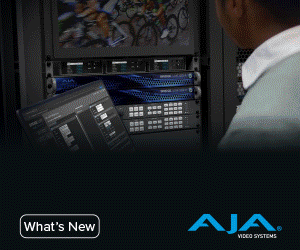In today’s fast-paced corporate world, audiovisual (AV) technologies play a crucial role in enhancing communication, collaboration, and overall efficiency. As businesses continue to navigate digital transformation, integrating these technologies seamlessly within the corporate environment has become a priority. For IT managers and AV specialists, understanding the essentials of AV integration is vital to maximize performance and support seamless operations.
1. Key Strategies for Effective AV Integration
The foundation of successful AV integration lies in understanding the specific needs of your organization. Conducting a thorough needs assessment is the first step. This involves evaluating existing systems, identifying gaps, and understanding user requirements. Once these are clear, you can begin to consider which AV technologies will best support your organization’s goals.
-
Standardization and Scalability: Opt for solutions that offer scalability and can grow with your organization. Standardizing equipment and software ensures compatibility and easier management.
-
User-Centric Design: Design systems with the end-user in mind. Easy-to-use interfaces encourage adoption and minimize the need for extensive training.
-
Vendor Collaboration: Work closely with AV vendors to gain insights into the latest technologies. Choosing reliable partners can lead to better support and innovation.
2. Harnessing the Latest AV Trends and Technologies
Staying up-to-date with AV trends is crucial for making informed integration decisions. Technologies such as cloud-based platforms and wireless solutions have become game-changers in the AV industry.
-
Cloud Platforms: Utilizing cloud-based solutions allows for centralized management and troubleshooting, reducing the burden on IT teams while ensuring that updates are consistently applied across all devices.
-
Wireless Connectivity: Cut the clutter by implementing wireless AV solutions, which offer greater flexibility and reduce installation costs.
-
AI and Automation: Explore tools that incorporate artificial intelligence to automate system diagnostics and routine tasks, boosting efficiency further.
3. Best Practices for Enhancing System Performance
To maintain optimal system performance, ongoing evaluation and maintenance are essential. Implement the following practices to ensure your AV systems are always up to par.
-
Regular Software Updates: Keep all AV equipment and software up to date with the latest patches and updates to enhance security and functionality.
-
Preventative Maintenance: Schedule regular checks and preventative measures to catch potential issues before they escalate.
-
User Training and Feedback: Continuously educate users on new features and solicit feedback to improve system usability.
4. Future-Proofing Your AV Integration
Future-proofing your AV solutions is about creating a sustainable environment that adapts to new advancements without major overhauls.
-
Modular Systems: Choose modular systems that allow easy upgrades as technology evolves, saving both time and resources.
-
Hybrid Solutions: With the rise of remote work, hybrid solutions that cater to both in-office and remote employees ensure inclusivity in collaboration.
-
Sustainable Practices: Adapt sustainable practices by opting for energy-efficient systems and disposing of old equipment responsibly.
Conclusion: Aligning AV Integration with Business Goals
Ultimately, AV integration should support and amplify an organization’s strategic objectives. A well-integrated AV system not only boosts efficiency but also fosters a more collaborative and productive work environment. By following these strategies, IT managers and AV specialists can ensure that their AV setups are future-ready, aligned with business goals, and poised to meet the communication challenges of tomorrow.
- Transforming Workspaces: The Future of AV Integration - February 19, 2025
- Transforming Remote Work: How AV Technology is Paving the Way - February 18, 2025
- Revolutionizing AV Integration: Embrace the Cloud - February 17, 2025








